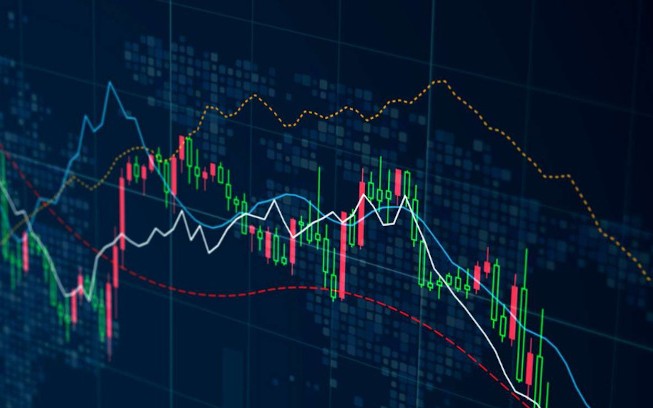
Forex Trading Basics: A Beginner’s Guide to Success
Forex trading, short for foreign exchange trading, is the act of buying and selling currencies with the aim of making a profit. The forex market operates 24 hours a day, five days a week, making it one of the most accessible and liquid markets in the world. For those just starting out, understanding the basics of forex trading is crucial for developing a successful trading strategy. In this guide, we’ll cover the fundamental concepts, tools, and strategies you need to get started with forex trading. For additional insights and resources, you can check out forex trading basics beginners guide Forex Brokers in Jordan.
Understanding Currency Pairs
In forex trading, currencies are traded in pairs. A currency pair consists of two currencies: the base currency and the quote currency. The base currency is the first currency listed in a pair, and the quote currency is the second. For example, in the pair EUR/USD, the euro (EUR) is the base currency, and the U.S. dollar (USD) is the quote currency. When trading a currency pair, you are essentially buying one currency while selling another.
Major, Minor, and Exotic Pairs
Currency pairs can be categorized into three main types:
- Major pairs: These pairs include the most traded currencies in the forex market, such as EUR/USD, USD/JPY, and GBP/USD.
- Minor pairs: These pairs do not involve the U.S. dollar and include currencies like EUR/GBP and AUD/NZD.
- Exotic pairs: These pairs involve a major currency and a currency from a developing economy, such as USD/TRY (U.S. dollar/Turkish lira).
Reading Forex Quotes
Forex quotes indicate the current price at which a currency pair can be bought or sold. Quotes are typically presented in two formats: direct and indirect. A direct quote shows how much of the quote currency is needed to purchase one unit of the base currency, while an indirect quote shows how much of the base currency is needed to buy one unit of the quote currency. Understanding how to read quotes is essential for making informed trading decisions.
Understanding Bid and Ask Prices
In the forex market, each currency pair has two prices: the bid price and the ask price. The bid price is the price at which traders can sell the base currency, while the ask price is the price at which they can buy it. The difference between these two prices is known as the spread. Traders should be aware of the spread as it directly affects their profitability.
Choosing a Forex Broker

Selecting a reputable forex broker is one of the most critical steps in your trading journey. A good broker provides a user-friendly trading platform, offers a variety of trading instruments, and implements strict regulations to protect traders’ investments. When choosing a broker, consider factors such as:
- Regulation: Ensure the broker is regulated by a recognized authority.
- Trading Platform: Look for an intuitive and reliable trading platform.
- Spreads and Commissions: Compare the cost of trading across different brokers.
- Customer Support: Check the availability and quality of customer support services.
Understanding Leverage and Margin
Leverage in forex trading allows traders to control larger positions with a smaller amount of capital. For example, if a broker offers 100:1 leverage, a trader can control a position worth $100,000 with just $1,000 of their own money. While leverage can amplify profits, it also comes with increased risk. It’s essential to understand margin requirements and manage your risk effectively to avoid significant losses.
Basic Forex Trading Strategies
As a beginner trader, it’s crucial to develop a trading strategy that fits your risk tolerance and trading style. Here are a few foundational strategies to consider:
- Scalping: A short-term strategy aimed at making small profits from minor price movements. Scalpers execute numerous trades throughout the day.
- Day Trading: Involves entering and exiting trades within the same day to capitalize on price movements during the trading session.
- Swing Trading: A medium-term strategy that seeks to capture price swings over several days or weeks.
- Position Trading: A long-term approach where traders hold positions for weeks, months, or even years, focusing on long-term trends.
Risk Management in Forex Trading
No matter how proficient you become as a forex trader, risk management is crucial to long-term success. Use the following risk management techniques:
- Set Stop-Loss Orders: A stop-loss order automatically closes a position once it reaches a specified price, limiting potential losses.
- Diversify Your Portfolio: Spreading your investments across multiple currency pairs can help mitigate risk.
- Do Not Over-leverage: While leverage can increase profits, over-leveraging can lead to significant losses. Use leverage wisely.
Utilizing Technical and Fundamental Analysis
Successful traders often use a combination of technical and fundamental analysis to make informed trading decisions. Technical analysis involves studying past price movements through charts and indicators, while fundamental analysis focuses on economic indicators, news releases, and geopolitical events that can impact currency values. Understanding how to analyze both will help you make more educated trading choices.
Conclusion
Forex trading offers exciting opportunities for profit, but it also comes with its risks. As a beginner, it’s essential to approach trading with a solid understanding of the basics. By learning about currency pairs, reading quotes, choosing a reputable broker, and implementing effective trading strategies and risk management techniques, you can set yourself up for success. Remember that practice and continuous learning are key to becoming a proficient trader. Start with a demo account to practice your skills without risking real money, and gradually move into live trading as you gain confidence and knowledge.
Recent Comments